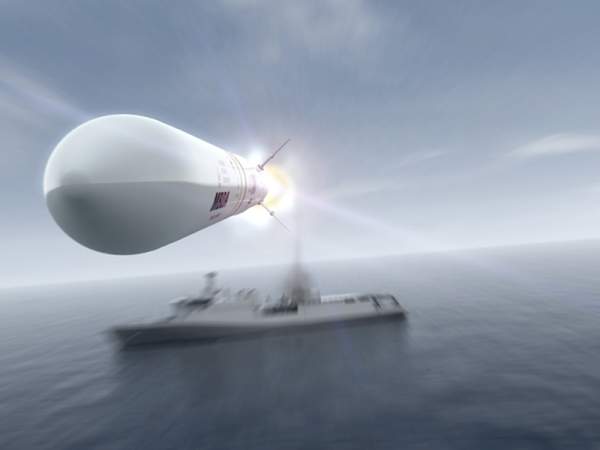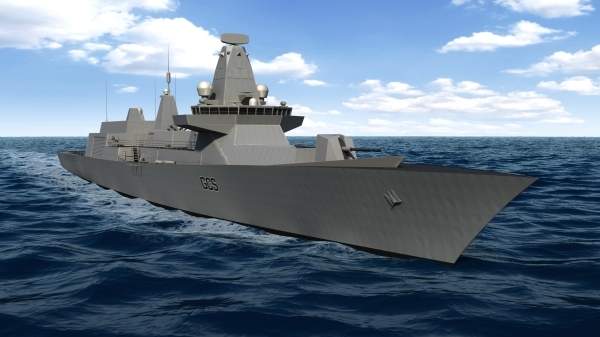The Sea Ceptor is a sea-based supersonic missile defence system developed for the British Royal Navy. The system will initially be mounted on Type 23 frigates. There is a plan to subsequently use them on Type 26 Global Combat Ships (GCS).
The Sea Ceptor missile system was developed by MBDA Missile Systems, a partnership between BAE Systems, EADS and Finmeccanica.
The Sea Ceptor programme will support approximately 500 jobs in the UK.
Thales UK develops and manufactures the laser proximity fuse for the Sea Ceptor’s missile as part of a contract signed in January 2012.
Sea Ceptor programme details
The Sea Ceptor missile system was designed to be suitable for the Type 26 GCS. The system will initially be deployed on Type 23 vessels to replace Vertical Launch Sea Wolf air defence system. The Sea Ceptor will also be deployed on the Type 26 combat ships when they replace the Type 23s in 2020.
The British Navy completed firings of Sea Ceptor on HMS Argyll in September 2017, as a part of life extension of Type 23 class frigates. The Sea Ceptor firings on HMS Westminster were concluded in December 2017. The missile was also test-fired by the HMS Montrose.
The Sea Ceptor missile system entered service with the British Navy in May 2018.
Though developed for the UK Royal Navy, the missile system will also be made available for other navies. Its modular design can be modified to suit the requirements of individual navies.
The Sea Ceptor can be deployed on various platforms, ranging from 50m offshore patrol vessels to large surface vessels.
Supersonic missile system design and features
The supersonic Sea Ceptor missile is 3.2m long and weighs 99kg. It has a diameter of 160cm. The missile covers a range of more than 25km and provides 360° coverage. It can reach speeds up to Mach 3.
The Sea Ceptor has a simple integration mechanism. It has a compact launch system that allows it to be deployed at various deck locations. The ‘soft launch’ technique reduces the weight of the system and provides installation flexibility.
The missile system does not require dedicated radars because it can utilise the data interpreted by the vessel’s surveillance radars. The command and control system can be integrated with new and existing combat systems.
The Sea Ceptor is based on MBDA’s common anti-air modular missile (CAMM). CAMM is being developed in three versions – CAMM (M) for maritime, CAMM (L) for land and CAMM (A) for air defence. CAMM (M) is the first to be developed, in the form of the Sea Ceptor.
Combat capabilities of MBDA’s missile defence system
The missile has the capability to intercept combat aircraft and missiles moving at supersonic speeds and neutralise them. It protects the host ship as well as the surrounding installations.
Sea Ceptor can respond to saturating attacks with its multiple channels of fire. It can protect an area of 1,300km² over land and sea.
The system is targeted towards sophisticated missile attacks in future.
Portfolio management agreement (PMA)
Under the PMA, MBDA will oversee the transformation of the complex weapons of the UK’s defence forces. The portfolio of projects under the agreement has the potential to value £4bn over ten years. It is expected to bring in efficiencies worth £1bn to the Ministry of Defence (MoD).
The Sea Ceptor programme is the second contract awarded under the PMA. The first contract, worth £330m, was signed between the MoD and MBDA in 2010.
According to the contract, MBDA will supply Fire Shadow Loitering Munition (LM) for the British Army and Selective Precision Effects at Range (SPEAR) Capability 2, Block 1, for the Royal Air Force.
Sea Ceptor orders and deliveries
MBDA won a £483m ($758m) demonstration contract for the Sea Ceptor from the Royal Navy in January 2012 under the future local area air defence system (FLAADS).
The contract is part of the portfolio management agreement (PMA), which the UK MoD signed with MBDA in 2010. Under the PMA, MBDA will manage the portfolio of complex weapon projects for the MoD for ten years.
MBDA secured a £250m ($403m) contract from the MOD for delivery of the Sea Ceptor air defence weapon system in September 2013.
In May 2014, MBDA received a contract from the New Zealand Ministry of Defence to supply Sea Ceptor for the Local Area Air Defence element of the Royal New Zealand Navy’s ANZAC Frigate Systems Upgrade (FSU) project.
The Brazilian Navy preferred Sea Ceptor to deliver local area air defence for its Tamandaré class corvettes in November 2014.
In April 2016, the MOD awarded a £100m ($145m) contract to MBDA for the demonstration and manufacturing of Sea Ceptor missiles for integration on the Type 26 GCS. The ten-year contract also includes the manufacture of electronics equipment and delivery of support for the eight ships in the class.
MBDA received a £323m ($416m) contract in April 2017 for the next batch of Land Ceptor and Sea Ceptor air-defence missiles for use by both the British Navy and Army.






